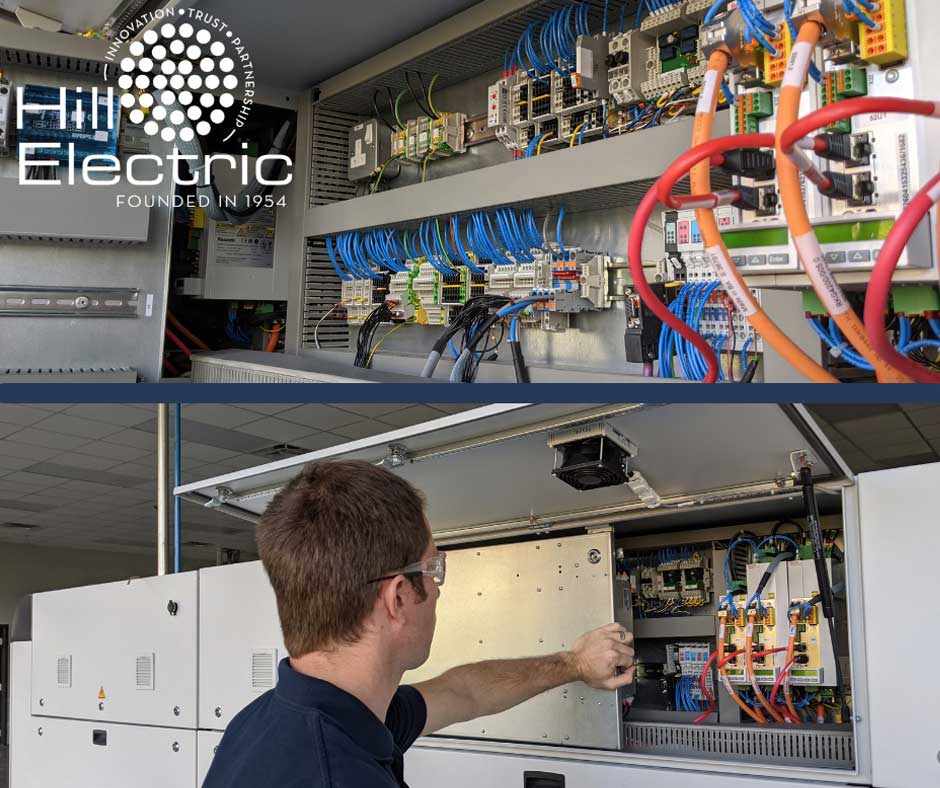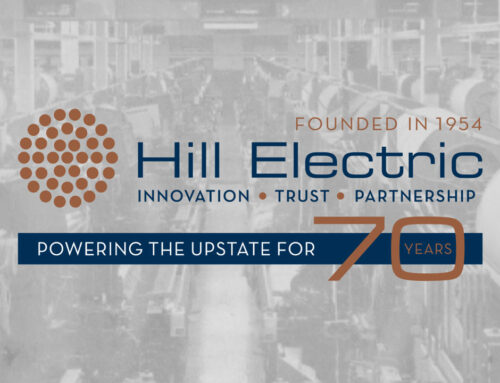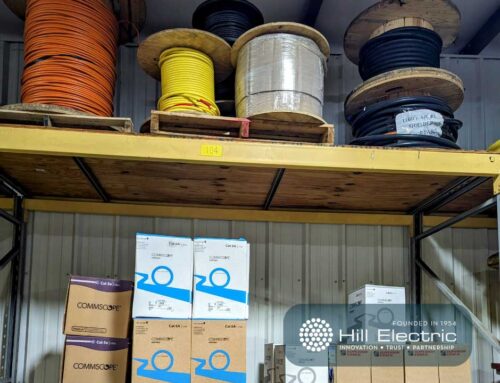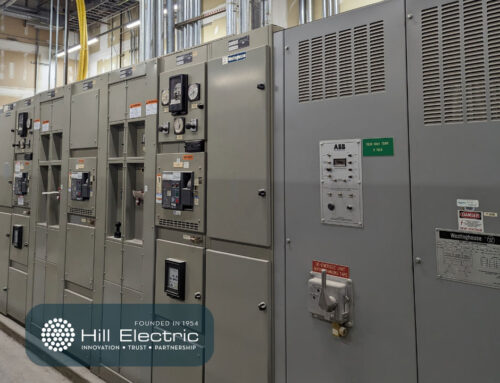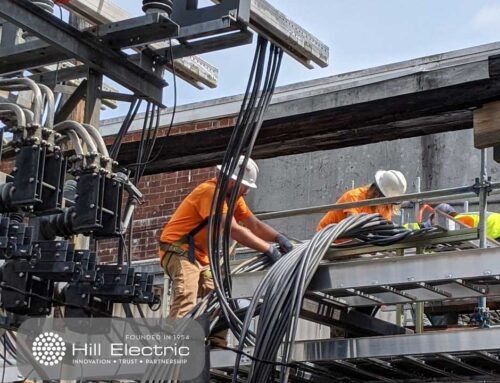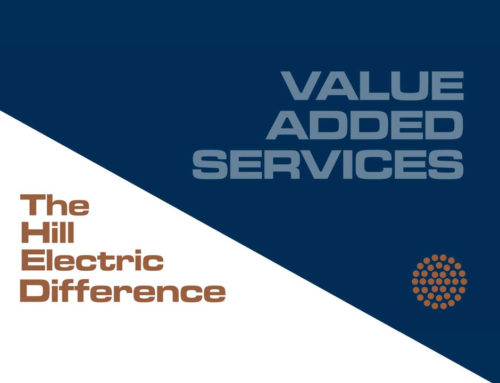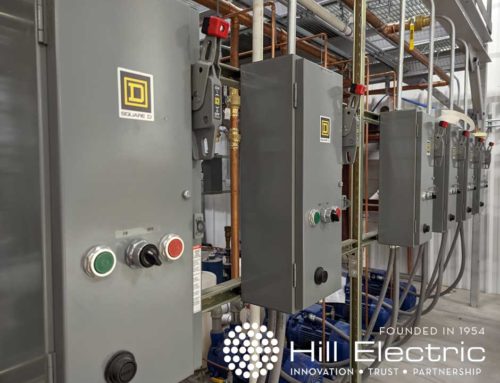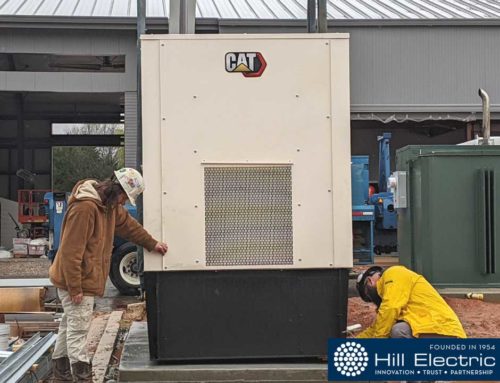It’s an understatement to say we get to do interesting work at Hill Electric. In fact, we usually have our hands on some extremely technical projects. In today’s blog, we want to break down three types of technical projects we often do for clients.
Installing Process Equipment
Process equipment installation requires a certain skill set to budget, install, and start up. When it comes to budgeting, there is usually very little information available—sometimes all you have to go by are pictures. As long as the customer provides motor and device counts, Hill Electric can put together a plan for execution.
The same is true on the installation side of things. It’s not uncommon to install used equipment, in which case the original drawings and specifications are rarely available. These scenarios require the assistance of a Hill Electric expert to assist in the wiring and checkout.
There are, however, times when we have completed layout drawings and wiring schematics to install by. This is ideal, but either way, Hill Electric has an experienced team that is capable of producing a safe and quality installation.
Service Entrance Upgrades
Service entrance upgrades occur when a customer is expanding or adding equipment or when the existing delivery is old and needs to be replaced.
Service entrance upgrades are a large investment for the customer, but they are also crucial for the plant to operate. For these reasons, we put a lot of planning into each upgrade we do.
The planning phase begins with the plant, engineers, and contractors meeting to develop a scope of work and set a budget. Once the budget is approved, we create drawings and provide a final quote for approval.
There is just as much planning happening on the plant production side as there is on our side. We inform our customers of the duration of the outage, and they coordinate with production to ensure they can meet their customers’ delivery needs.
The point of no return occurs when the existing service is ripped out. But don’t let that scare you. As long as you’re working with an experienced industrial electrical contractor, you’ll experience a smooth service entrance upgrade.
Machinery Retrofitting
Machinery is designed to last for the long haul. Even so, it’s challenging to keep up with production demands on aging equipment. Over time, components wear and fail to operate as they were designed to, resulting in malfunction. Downtime is multiplied as legacy components become more difficult to purchase, sometimes even obsolete. However, we have local industry partners who can step in and assist with any service and repairs needed.
Retrofitting production machinery is a common and proven practice of upgrading individual machine components. There are several advantages to retrofitting. First, retrofits allow for upgrading smaller sections of a process rather than having to replace the entire process. This allows for more manageable downtime and cost.
Second, a retrofit allows for upgrades that improve quality and production speed. This is valuable because producing off-quality materials multiplies production costs and wastes production time. Material waste can also be reduced through retrofitting as it provides a
solution for obsolete components.
Another advantage of retrofitting is that it offers a solution for increased regulations and safety. An example of this is a safety upgrade installation Hill Electric did in which our team installed a safety programmable logic controller (PLC) that accepted individual inputs for each machine safety E-stop (emergency stop switches). This allowed maintenance to easily see which button was pressed or faulty without wasting valuable time. We also installed smart light curtains that could be timed with the production cycle. This allowed operators to pass into the production area to remove products during the safe time of the sequence. The curtains also replaced the gates that were being constantly opened and closed, causing repetitive fatigue and slowing product access.
Another retrofit Hill Electric did was replacing hydraulic power with electric motors. Hydraulics are often used to transport products between stages of production – like transporting a product with an elevator from the lower pass assembly line to a second level assembly line. By replacing the hydraulics with direct driven electric motors, our customer was able to increase the speed and accuracy of the elevator.
In Conclusion…
There’s nothing simple about the world of industrial electrical installations, but we are confident that we have the best team in place for the job. Feel free to reach out by phone or through our website if you have an industrial project you’d like to partner with Hill Electric on.

